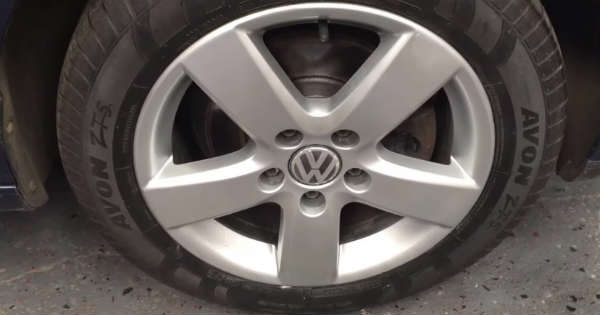Changing tires is a routine process everyone has to go through once in a while. However, things might get tricky when it comes to changing wheels size. Remember that your vehicle is more than an expensive toy. It is a sophisticated, fine-tuned system that depends on consistency. When you add seemingly minor changes, be prepared that they can send cascading effects throughout different parts of this system. This is also true for your wheel size, so here are some safety tips if you still want to play with your car’s aesthetics and performance.

How to Change Tire Size Safely
The easiest way to get more ground clearance or to visually make your car look bigger is to get bigger tires. This must be done with caution since every car is designed specifically with a certain tire size in mind. This generally means that your wheel well will only fit tires of a particular size specified in the manual. If you get anything that exceeds that size, you run a risk of making your new tires rub against the well walls and possibly damage the frame and other essential components like the braking system.
Always check compatibility to prevent such issues. It is a simple task if you use popular tire comparison tools that show you the old and new wheel specs and how your choice will impact other important parameters, which we will discuss below.
The only downside of such tools is that their capacities are limited. No tool will let you know that your desired bulky tires are much heavier than they should be. This extra weight is a problem because it silently and continuously wears down the parts that keep your wheel attached to the car and affects your braking performance.
In contrast, if you decide to get smaller wheels, there are different risks you can run into. “This is a popular mod to pair up with a lowering kit,” says Oliver Brown, Data Coordinator at Wheelssize.com. “What people often don’t realize is that smaller tires increase the revolution rate.” This is particularly important to how your transmission works. Faster spinning wears it down quicker than you would normally expect, not to mention a possible overheating of the transmission fluid.
Small tires can also affect your safety systems in a bad way. Remember that braking, driving assistance features and anti-lock brakes, to some extent, rely on wheels. And if you decide to reduce their size significantly, run a thorough test with a professional mechanic.
How Different Wheel Size Influences Your Vehicle
To some car customization enthusiasts, larger tires are not enough, and they want to change the wheels completely. Depending on the car and the size difference, this modification can be done at a local shop. However, larger rims can have similar consequences to up-sizing tires without some supporting upgrades. The key difference is that the wheels themselves are pretty heavy and often require bigger tires to match their diameter. This puts your car through even bigger strain.
The change in both weight and diameter will eventually affect the handling making the vehicle less responsive, and it will also impact acceleration. Since it takes more effort to turn bigger wheels, your car will naturally accelerate worse than it used to.
Smaller rims will significantly cut your tires’ life span. Since smaller wheels usually mean smaller tires, this means they will spin faster. And unfortunately, smaller tires will wear much faster. Thread gets sanded off the tires from fast spinning and close contact with the road.
Always Check The Bolt Pattern
When looking for new wheels, size is hardly the only thing you should consider carefully. Each wheel has a specific bolt pattern and if you want to change the wheel for some reason, make sure the pattern remains the same. It can not be changed for safety reasons because manufacturers build their cars with regard to many technical characteristics (weight distribution, wheel weight, the durability of the wheel assembly, etc.). Getting wheels with a perfectly matching bolt pattern and lug nut sizes will guarantee that those wheels stay secure on their mounting.
Size Difference Alter The Wheel Offset
Larger wheels or tires are often wider and smaller wheels are narrower, which means they fit in the wheel well differently. This change can throw off your wheel offset, impact handling and other characteristics. The wheel offset describes the distance from the wheel centerline to the place where that wheel is mounted, and it can be zero, positive or negative. The more your wheel protrudes outwards, the more positive it is. Therefore, the offset changes if you suddenly switch rims or tires (or both) for larger or smaller models.
Venture too far into the positive zone and you will get a much worse handling experience. There will also be a risk of damaging brakes and the vehicle’s body with tires. And with too much negative offset, the transmission will suffer from too much wear. The rule of thumb in this situation is to not get further than 5mm from your OEM offset values.
Speedometer & Odometer Discrepancies
No surprise that your speed and distance are calculated based on how the wheels roll. But drivers often forget about all the nuances when there is a lot to consider when buying new wheels or tires. We already know that tire size or rather its diameter, affects the revolution rate.
Larger tires complete the circle at a slower pace than they should, according to the manufacturer’s calculations. The speedometer will pick the data wrong and show that your vehicle is moving at a lower speed than it actually is. The odometer readings will also show that you have traveled a shorter distance. And with smaller wheels, these discrepancies in readings will be reversed. Both the speedometer and odometer will exaggerate your speed and distance.
This problem can be solved by calibrating both devices. This can be done at your local shop or if you have spare time, you can find the calibrating button in the manual and follow the instructions.
Regardless of your wheel size preferences, remember that your safety must always come first. Drive safely!
Written by Charles Farrell




